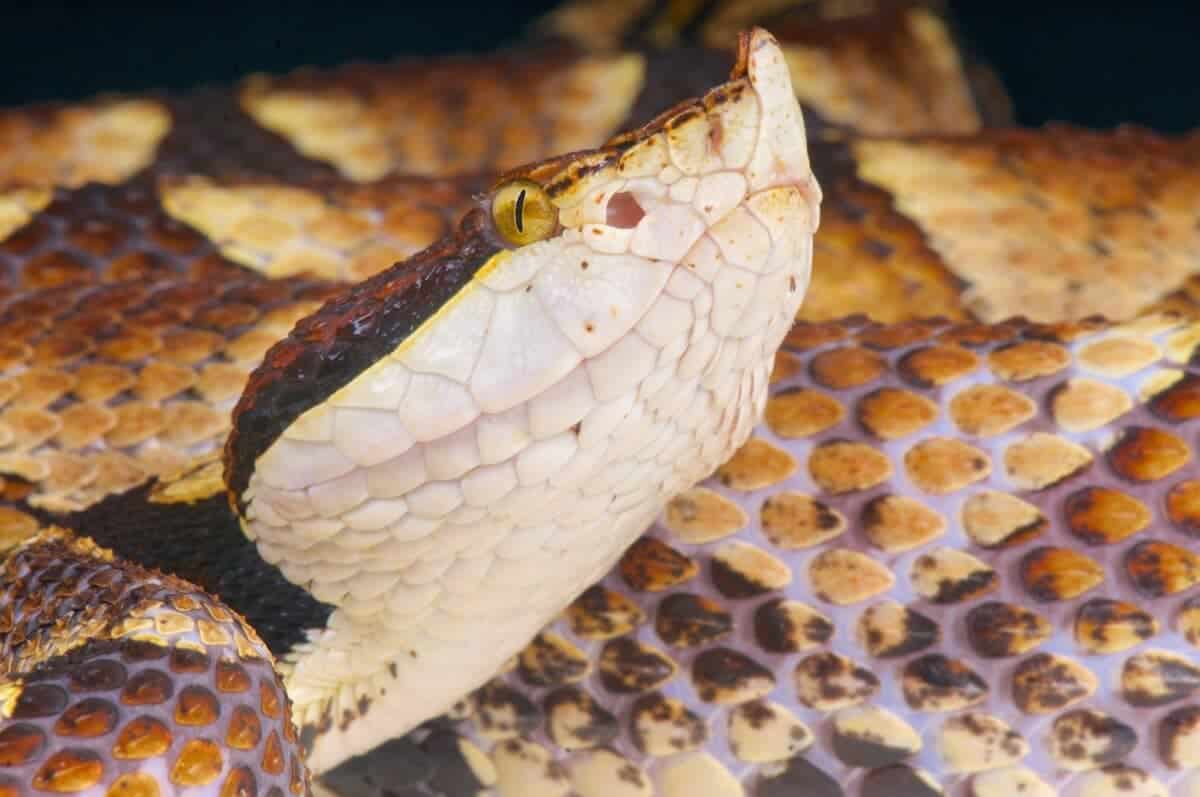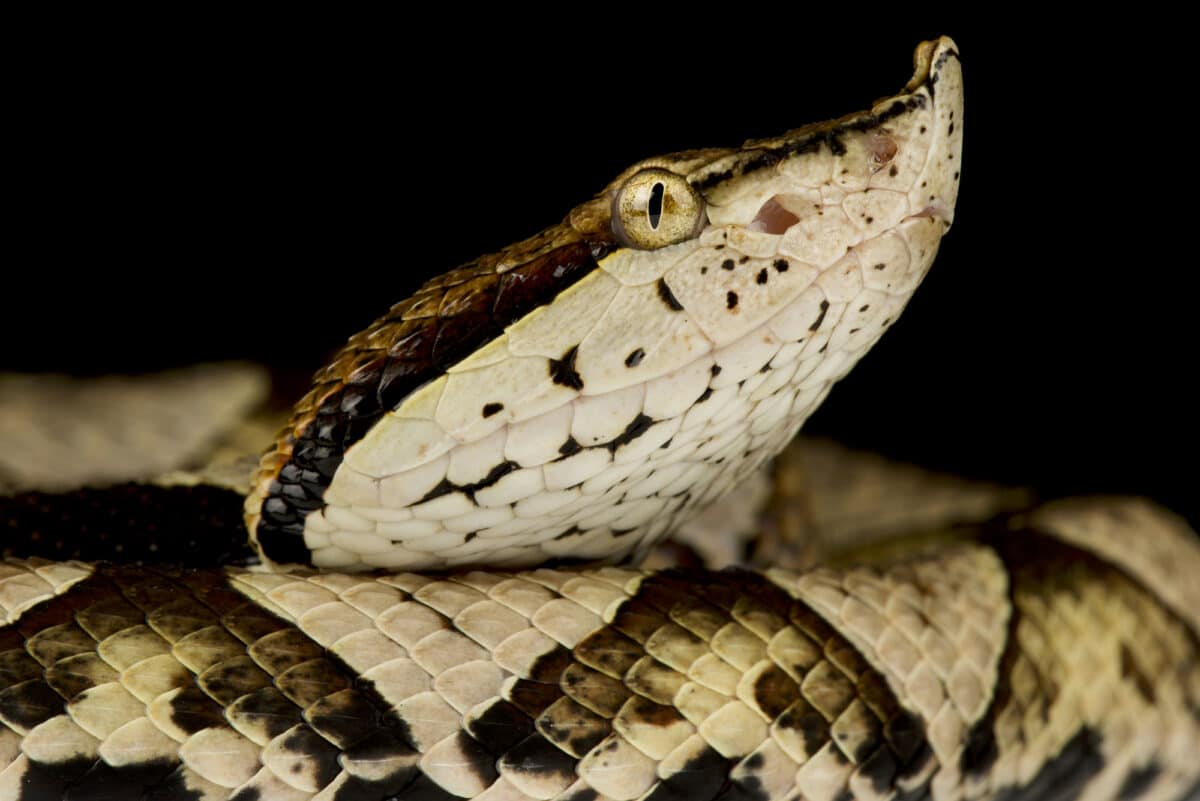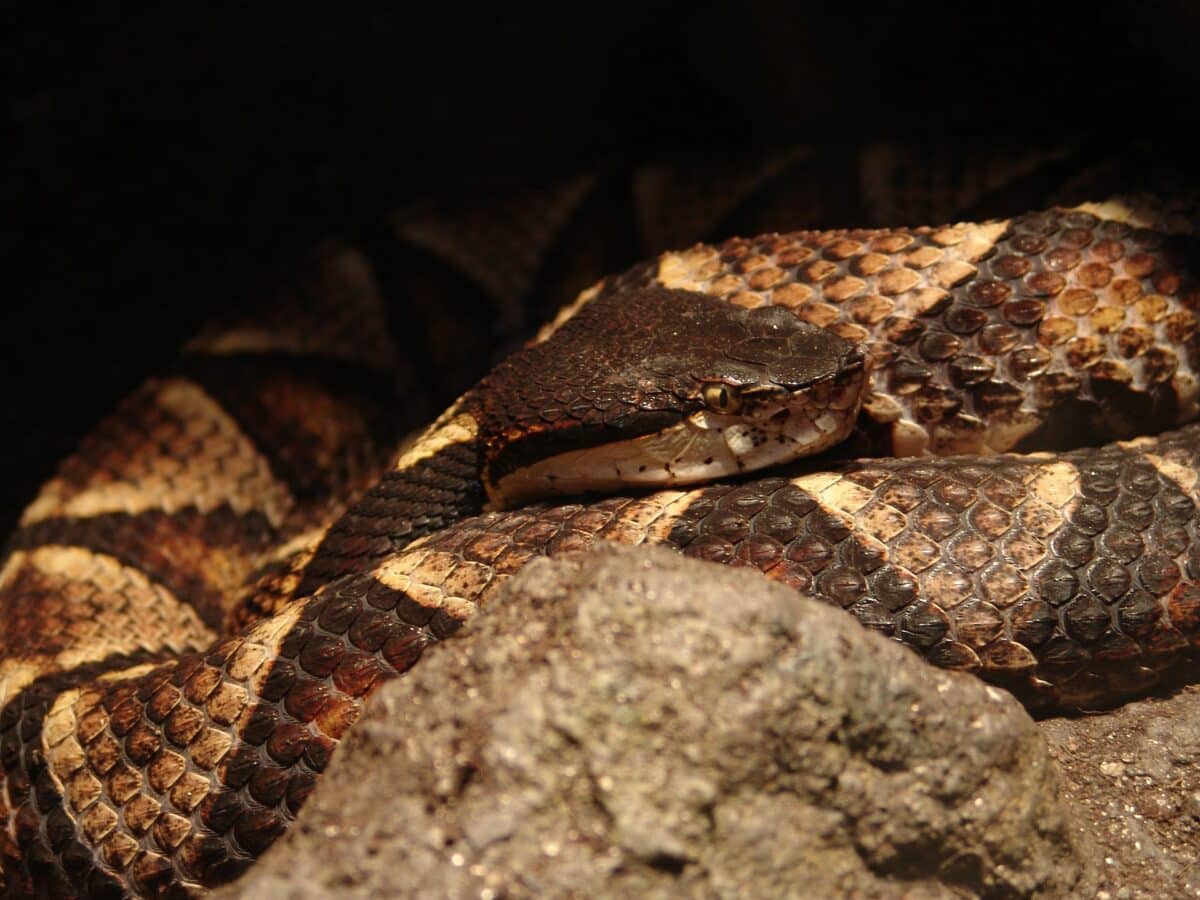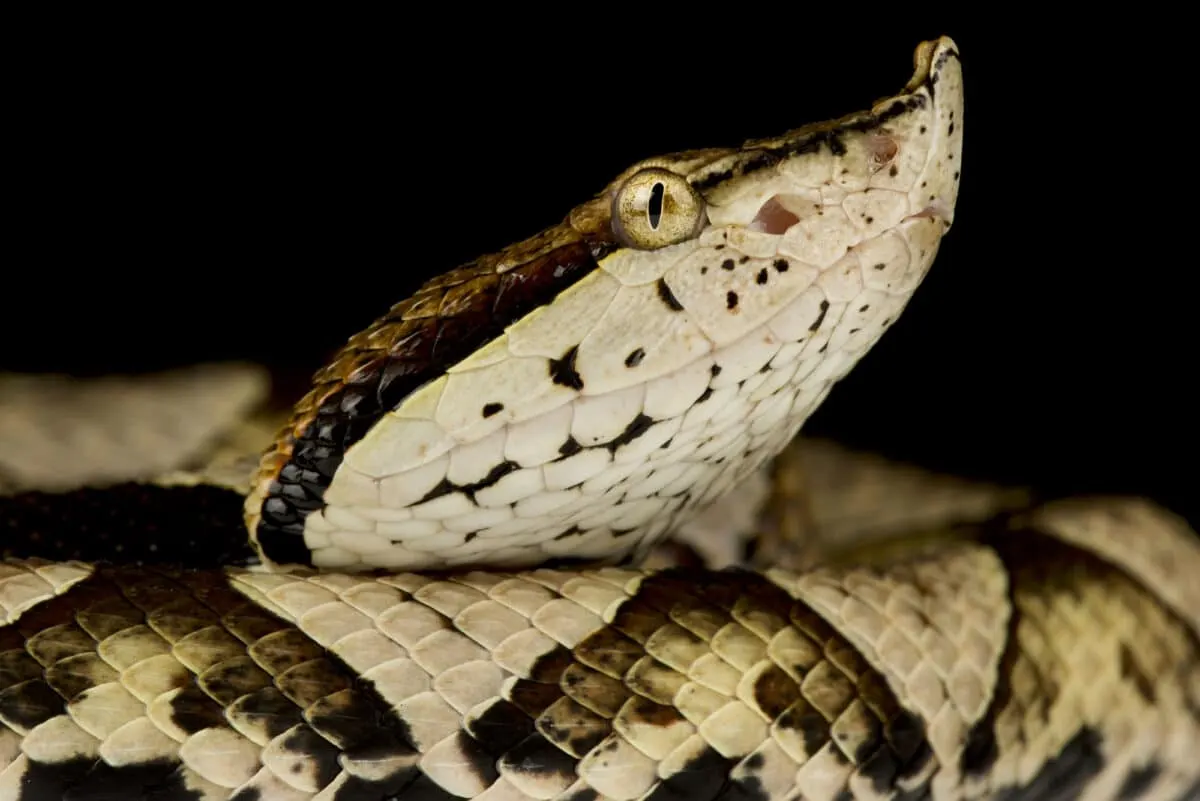The sharp-nosed pit viper is a venomous snake species that belongs to the family Viperidae. It is also known as the Deinagkistrodon acutus and is common in East and Southeast Asia. The typical length of this species is between 70 and 100 cm. The sharp-nosed pit viper has a triangular-shaped head and a sharp, needle-like nose that helps them locate prey easily.
Snakebites are a significant global public health concern. Especially in developing countries and rural areas with limited access to medical care. Snakebites are estimated to affect millions worldwide, with up to 138,000 deaths reported annually. Therefore, raising awareness about snakebites and their significance is vital to prevent and manage such incidents efficiently.

Slither ahead to any section below!
Sharp-Nosed Pit Vipers: Characteristics and Habitat
The sharp-nosed pit viper, scientifically known as Deinagkistrodon acutus, is a venomous snake species that belongs to the family Viperidae. They are relatively small, averaging between 70-100 cm in length, and are native to parts of East and Southeast Asia.
Notably, the sharp-nosed pit viper has a triangular-shaped head and a thin, sharp nose that easily allows it to locate prey. Its skin has small scales ranging from light brown to grayish-brown and distinctive dark brown or black markings on its back and sides.
One unique feature of the sharp-nosed pit viper is its pair of heat-sensing pits between the eyes and nostrils. This enables it to detect its prey’s body heat, even in complete darkness.
The venom of the sharp-nosed pit viper contains a potent neurotoxin that can cause serious harm to humans if they are bitten. As a result, it’s crucial to use caution when interacting with this species in the wild. Understanding the characteristics of the sharp-nosed pit viper is essential for conservation efforts and for preventing and managing snakebite incidents.
Venomous Nature of Sharp-Nosed Pit Vipers

The Sharp-Nosed Pit Viper contains a complex mixture of toxins that can cause various symptoms in humans if bitten. Their venom composition includes enzymes, peptides, and other compounds that affect the body’s nervous system, blood-clotting ability, and tissue damage.
Also, the effects of Sharp-Nosed Pit Viper venom on the human body can be severe and life-threatening. Envenomation symptoms include nausea, vomiting, dizziness, difficulty breathing, swelling, pain, and discoloration at the site of the bite.
Antivenom therapy is the primary treatment for Sharp-Nosed Pit Viper bites and should be administered immediately after the bite. Understanding the composition and effects of Sharp-Nosed Pit Viper venom is crucial for preventing and treating snakebite envenomation and promoting public awareness of the dangers of these snakes.
Check out: Redback Spider Bites & How to Treat Them.
Signs and Symptoms of a Sharp-Nosed Pit Viper Bite
A Sharp-Nosed Pit Viper can cause various symptoms ranging from mild to severe. The symptoms of a bite depend on various factors, such as the amount of venom injected, the bite’s location, and the victim’s age and health.
The initial symptoms after a bite from a Sharp-Nosed Pit Viper are usually pain and swelling around the bite, with physical signs of fang marks, hemorrhagic blisters, and ecchymosis. In more severe cases, victims may experience systemic symptoms such as nausea, vomiting, dizziness, abdominal pain, shock, and coagulopathy.
Victims may sometimes develop respiratory distress, muscle weakness, or even paralysis. If bitten by a Sharp-Nosed Pit Viper, it is essential to seek prompt medical attention, as untreated bites can lead to significant morbidity and mortality. Understanding the signs and symptoms of a Sharp-Nosed Pit Viper bite is crucial for quick diagnosis, treatment, and recovery.
Emergency Response and Treatment

First aid measures for snakebite victims are crucial to prevent further harm and promote recovery. The first step is to move away from the snake’s striking distance and remain calm to slow the spread of venom. Eliminating tight clothing and jewelry around the affected area is essential, as swelling can constrict blood flow and cause severe pain.
The bite wound should be immobilized and kept at or below the heart’s level to slow the spread of venom. Apply a pressure immobilization bandage to the affected limb and seek medical attention immediately. It is essential not to use a tourniquet, apply ice, or cut into the bite wound with a knife or razor.
However, the wound should not be washed or sucked out, as this can worsen the venom’s effects. Finally, monitoring the victim’s vital signs, keeping them calm, and transporting them to medical care as soon as possible is vital. Early intervention and prompt medical attention are critical in managing the complications of snakebite envenomation.
Check out: Birman Cat.
Prevention and Safety Measures
Pre and safety measures are essential in avoiding encounters with venomous snakes like the Sharp-Nosed Pit Viper. Understanding their habitats and behavior can help individuals avoid areas where snakes may reside, such as rocky outcrops, dense vegetation, and water sources. It is also essential to wear appropriate protective clothing, including long pants and boots when hiking or working outdoors.
When encountering snakes, it is crucial to remain calm, move away slowly and avoid provoking them. Additionally, carrying a snakebite kit and learning basic first aid skills can help manage snakebite incidents. By taking simple precautions and being aware of their surroundings, individuals can minimize the risk of venomous snake encounters and avoid snake bite injuries.
Managing Snake Bite Incidents in Different Environments
Managing snakebite incidents in different environments requires different approaches. In urban areas, contacting emergency services and seeking medical attention is important. By contrast, proper training in wilderness first aid and evacuation procedures are essential in remote or wilderness areas;
This involves recognizing the signs and symptoms of snakebite envenomation, administering basic first aid measures, and arranging for prompt evacuation to a medical facility for further treatment.
When traveling to remote or wilderness areas, carrying a well-stocked first aid kit and survival supplies is essential as informing others of the itinerary and expected return time. Being prepared, aware, and knowledgeable can help individuals manage snakebite incidents effectively and promote a faster recovery.
Check out: Huntsman Spider Bite.
Frequently Asked Questions
A bite from a sharp-nosed pit viper can be very dangerous. Their venom contains potent neurotoxins and hemotoxins. This can cause severe symptoms such as paralysis, respiratory failure, internal bleeding, and organ damage. Prompt medical attention and administration of antivenom are crucial for effective treatment.
If bitten by a sharp-nosed pit viper, staying calm and moving away from the snake is important to prevent further bites. Immediately immobilize the affected limb, keep it at or below heart level, and apply a pressure immobilization bandage. Seek immediate medical attention and avoid washing the wound, using tourniquets, ice, or cutting into the bite area.
To prevent sharp-nosed pit viper bites, it is important to understand their habitats and behaviors. Avoid known snake habitats and wear appropriate protective clothing like long pants and boots. Additionally, remain calm and non-provocative if you encounter a snake. Carrying a snakebite kit and having basic first-aid knowledge can also be helpful. By being aware and taking necessary precautions, you can minimize the risk of encountering and being bitten by venomous snakes.
Key Points
| The sharp-nosed pit viper is a venomous snake species native to East and Southeast Asia, known for its small size and distinctive sharp nose. |
| The venom of sharp-nosed pit vipers contains potent neurotoxins and hemotoxins, which can cause severe symptoms and even death if left untreated. |
| Symptoms of a sharp-nosed pit viper bite may include pain, swelling, discoloration, nausea, vomiting, dizziness, and difficulty breathing. |
| Immediate first aid measures, such as immobilizing the affected limb and seeking medical attention, are crucial in managing a sharp-nosed pit viper bite. |
| Prevention and safety measures, including understanding snake habitats, wearing appropriate protective clothing, and remaining calm during snake encounters, can help reduce the risk of snakebite incidents. |
| Managing snakebite incidents in different environments requires different approaches, such as contacting emergency services in urban areas and wilderness first aid and evacuation procedures in remote or wilderness areas. |
Bottom Line
In conclusion, the sharp-nosed pit viper is a venomous snake species that poses significant risks to human health. The composition of their venom and the severity of symptoms highlight the importance of education in minimizing snake bite incidents.
Understanding the signs and symptoms of snakebites, administering appropriate first aid measures, and seeking prompt medical attention are crucial in managing complications and promoting recovery. When traveling, it is essential to research potential hazards and prepare adequately by carrying appropriate equipment and supplies.
Promoting public awareness and education on the dangers of snake bites can help prevent snake bite incidents and promote healthy coexistence with these fascinating but potentially dangerous creatures.
Thanks for reading along, for more, check out our related article links below!
Next up:
- Amur Leopard: World’s Most Endangered Big Cat
- Anaconda vs. Asian vine snake
- Alaskan Malamute Vs. Bearded Collie
- Bengal Tiger Vs. Western Diamondback Rattlesnake
- Bernese Mountain Dog
- The Greenland Shark
- The Largest School of Spinner Dolphins
- Whale Sharks
- Tiger Shark Encounters
Join our Forum for free today!

- Huge Pet Bison Breaks Into House - July 22, 2024
- Giant Black Bear Surprises Beachgoers by Emerging from the Ocean in Florida - July 22, 2024
- Brave Man Plays Instrument While Huge Bear Caresses His Shoulder - July 22, 2024


